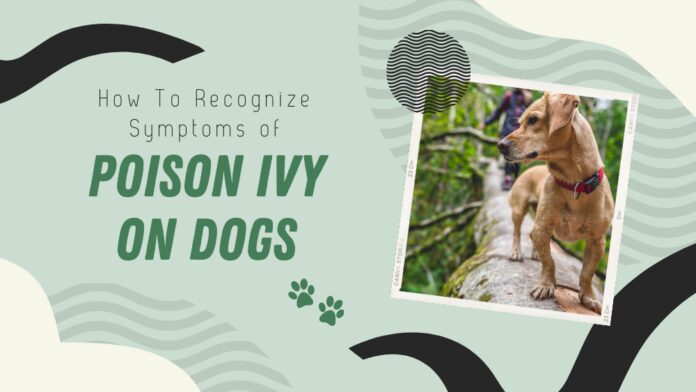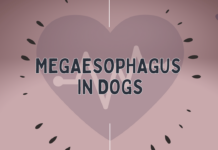Opinions are split when it comes to the effects of poison ivy on dogs. Some camps claim dogs are not affected by poison ivy at all and others that it can be a threat to your dog’s health.
Since there are reported cases of poison ivy effecting dogs all over the internet and at vets offices we can only assume that it does so and act accordingly.
WHAT IS POISON IVY?
Poison ivy (toxicodendron radicons) is a plant that is native to Northern America excluding Hawaii and Alaska. It can be found in forests, fields, wetlands, streams, the roadside, parks and even backyards.
In fact many of the places you will also find our beloved pooches. Growing in clusters and recognised by its groups of three leaves in light to dark green, poison ivy is a menace.
Its sap which contains uroshial oil is found in nearly every part of the plant including stems, leaves and roots, and this is what causes the problems.
WHY IS POISON IVY A PROBLEM?
The problems with poison ivy begin when your dog (or you for that matter) touches it. The uroshial oil is transferred to the skin and can cause a reaction which is commonly known as contact dermatitis.

Touch is not the only way poison ivy can affect your dog’s health, if ingested it can lead to death.
ARE SOME BREEDS MORE PRONE TO POISON IVY’S EFFECTS THAN OTHERS?
The answer to this is yes, dogs with longer, thicker coats will be less likely to suffer the effects of poison ivy than short haired or hairless dogs. Here is a breed separation according to their reaction to poison ivy poisoning.
| Low risk | Medium risk | High risk |
| Bearded Collie | Jack Russell | American Hairless |
| Newfoundland | Boxer | Chinese Crested |
| St Bernard | Doberman Pinscher | Hairless Khala |
| Alaskan Malamute | Greyhound | Peruvian Inca Orchid |
| Komondor | Beagle | Xoloitzcuintte |
| Afghan Hound | Chihuaha (smooth) | |
| Shih Tzu | Staffordshire Terrier |
It needs to be noted that all dog’s inner legs, stomachs, noses, muzzles and groins are at risk as they have less fur.
This would especially apply to small dogs who are lower to the ground. Ingestion is not breed specific as any dog can eat this harmful plant.
WHAT ARE THE SYMPTOMS THAT INDICATE YOUR DOG HAS BEEN AFFECTED BY POISON IVY?
Not all dogs will react to being in contact with poison ivy in the same way.
The only thing that is for sure is that dogs can get poison ivy on them and that they will feel a certain reaction to this.

Symptoms they may show include:
- Increased scratching
- Increased licking
- Chewing or biting at themselves
- Raised bumps on the skin
- Skin Swelling
- Inflamed skin
- Blisters which may or may not ooze clear liquid
- Open sores
Both contact with poison ivy and ingestion of poison ivy may result in:
- Diarrhea
- Vomiting
- Anaphylactic shock – the most common symptoms are the sudden onset of vomiting, diarrhoea, and sometimes seizures. Check if the dog’s gums are very pale and if the paws are cold. Usually, in this case, the heart rate is incredibly fast, but the pulse feels extremely weak.
WHAT SHOULD YOU DO IF YOUR DOG HAS BEEN IN CONTACT WITH OR INGESTED POISON IVY?
If you think or know that your dog has eaten poison ivy, you should contact your vet immediately.
If he has been vomiting it can be a good sign, which indicates that his system is trying to stop the toxins from the poison ivy spreading round his body.
Sometimes though, the toxin can prove to be too strong for your dog to fight and this could result in death.
Your vet may choose to treat your dog with charcoal to cleanse his stomach and keep him overnight to be monitored and cared for.

If your dog has been in contact with poison ivy you should follow these instructions:
- Firstly put on some protective gloves. This will ensure you do not come into contact with the oil, it can be just as harmful when in contact with human skin as canine.
- Bathe your dog in warm water using a mild shampoo.
- Rinse your dog ensuring all shampoo is removed from their fur.
- Re-bathe your dog again in warm water and mild shampoo.
- Rinse your dog again ensuring all shampoo is removed from their fur.
Ensure you wash all towels, clothing and soft furnishings your dog has been in contact with in a timely manner. You may also want to give your dog an antihistamine (Benadryl is safe) to prevent or deter any reaction in your dog.
It is advisable to check with your vet that your dog can take Benadryl in case of any underlying medical conditions this medication may affect.

If your dog begins to show signs they have been affected by poison ivy there are some things you can do to reduce the itching, swelling and any discomfort your dog may be feeling.
Giving them Benadryl is one way if you have not already done so. Rubbing alcohol is another way to soothe your dog but must be rinsed off after leaving on your dogs coat for ten minutes.
Jewel weed, also known as impatiens or touch me not can also be used to help with itching. A common weed it is commonly mashed up and used to remove the oil from a dog’s fur and skin. It is also capable of soothing when applied to the infected area.
If you have neither rubbing alcohol nor jewel weed you can use a cold compress and fan on the affected area to cool it down. This cooling process helps prevent blisters and oozing and speeds up the healing process.
Other remedies to try include; plantain leaf, fresh Aloe Vera slit leaves, cucumber slices and calamine lotion.
If your dog continues to itch, scratch, bite or chew on affected areas then you may wish to use an Elizabethan collar. This will prevent your dog from further affecting the reactions he has had to poison ivy. If the reaction your dog suffers seems severe or does not seem to be settling you must contact your vet.
THE BEST CURE
The best cure for poison ivy reactions is not actually a cure. As with anything the key is actually prevention. Learning what poison ivy looks like (and other toxic plants) and avoiding it is the best thing you can do for your dog and you.
Try keeping your dog on its leash at much as possible in locations where you might find poison ivy.
This is not always feasible, your dog needs exercise and off leash bounding about is part of that. Be observant though and keep an eye on where your dog is sniffing and roaming.

The final conclusion is that, even some veterinarians will keep saying that dogs are not sensitive to this plant, they actually can get it pretty bad. Even a dog with a thick, long coat can get poisoned either by ingestion or by rubbing his discovered area to the plant.
The best way to keep your dog and yourself safe from this plant is to make sure you know it. If you can recognize it from distance then you can avoid going in the close vicinity.




